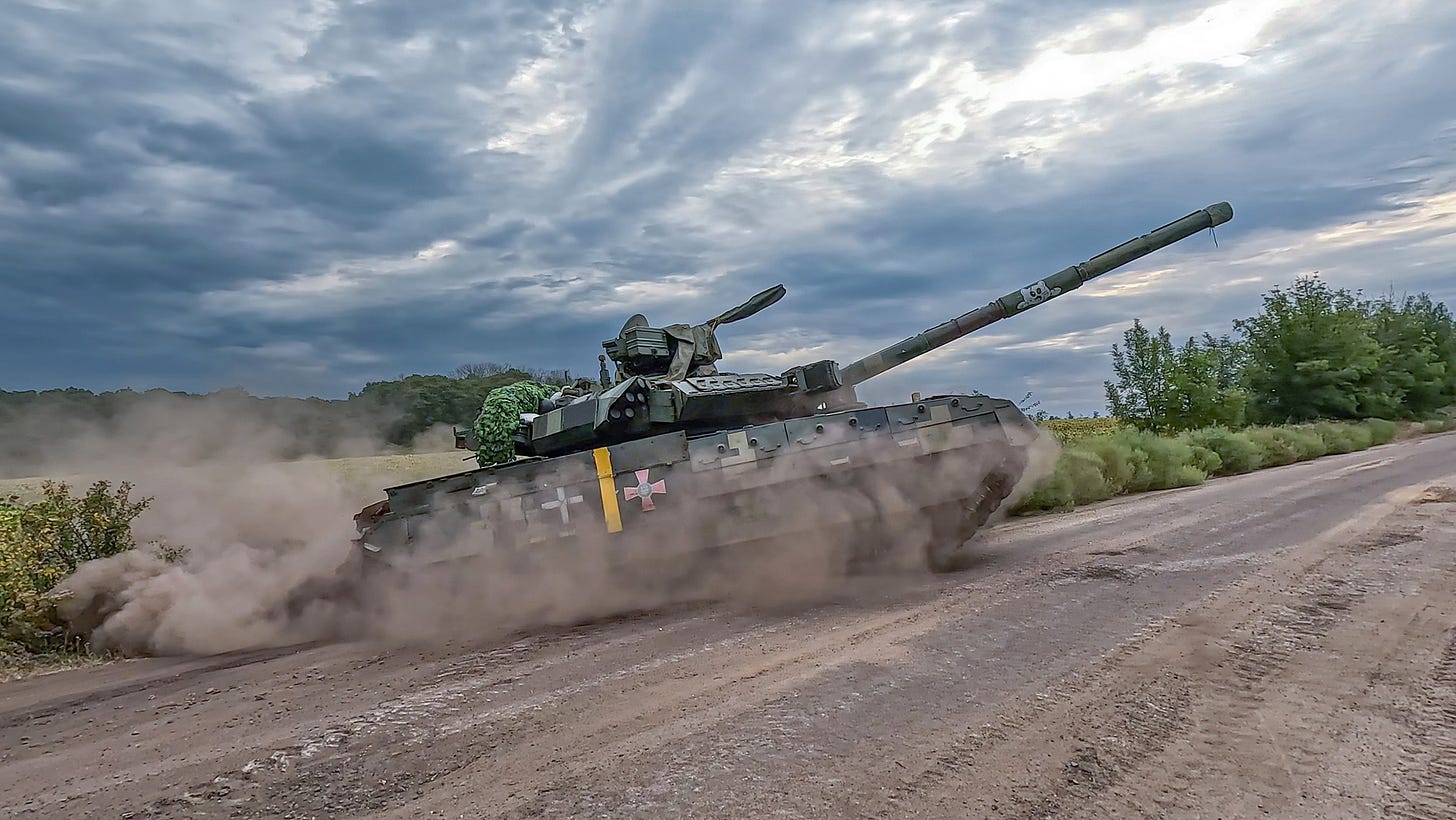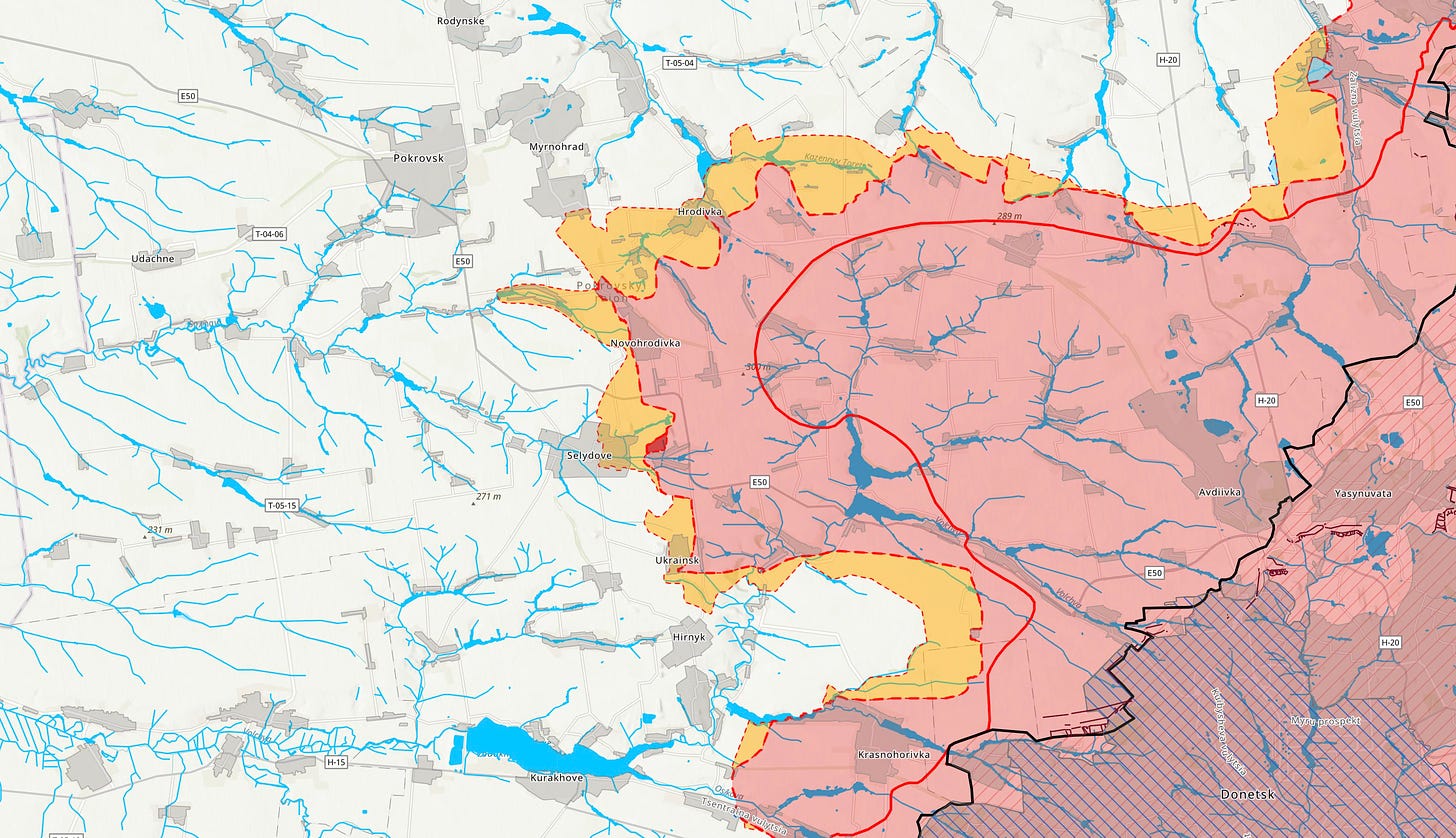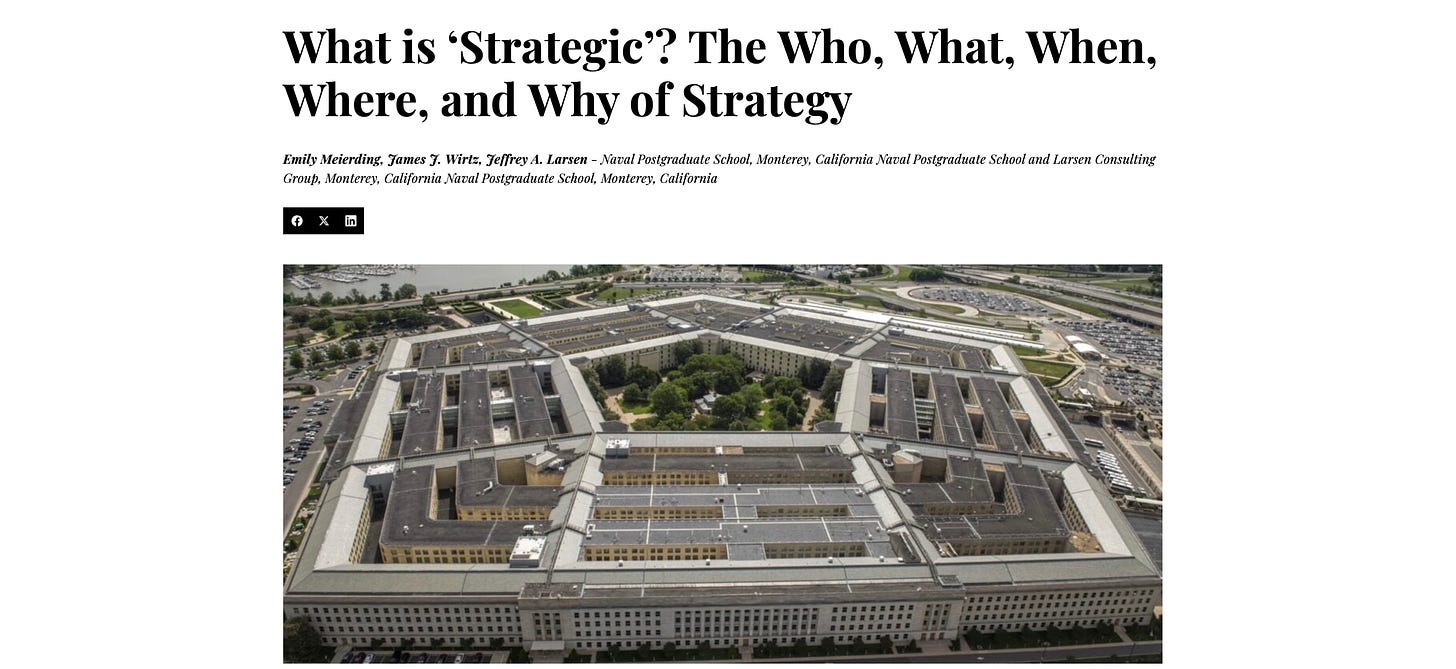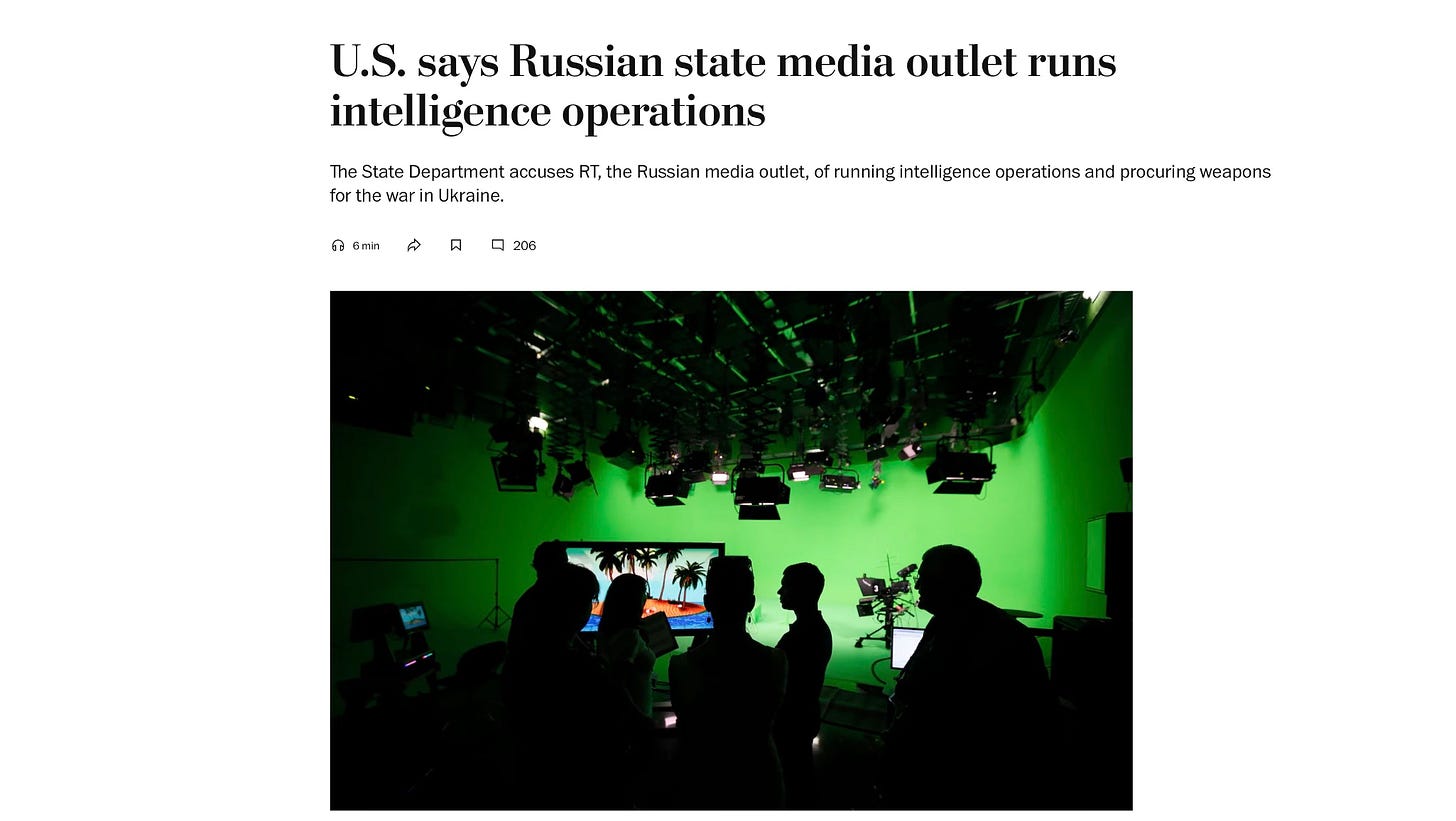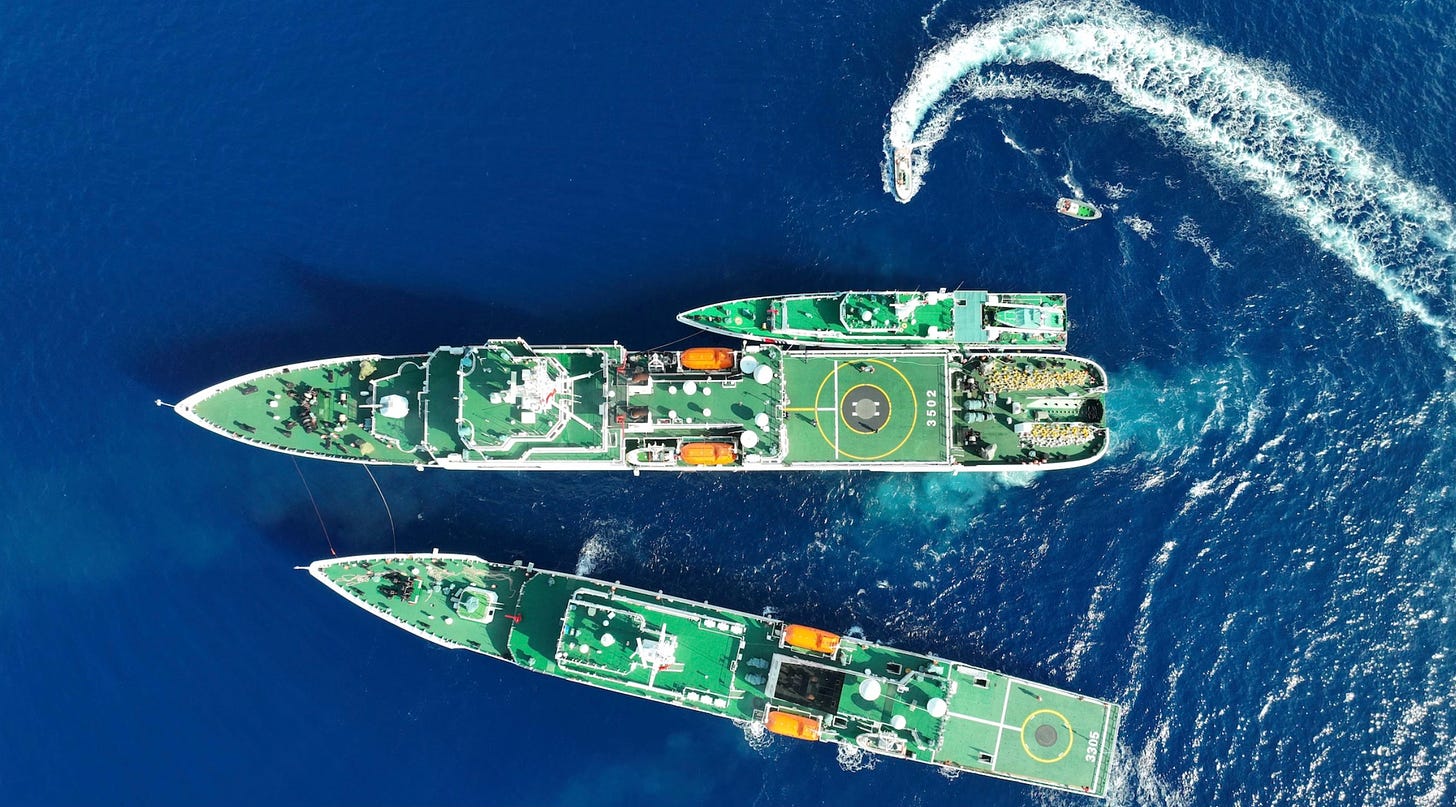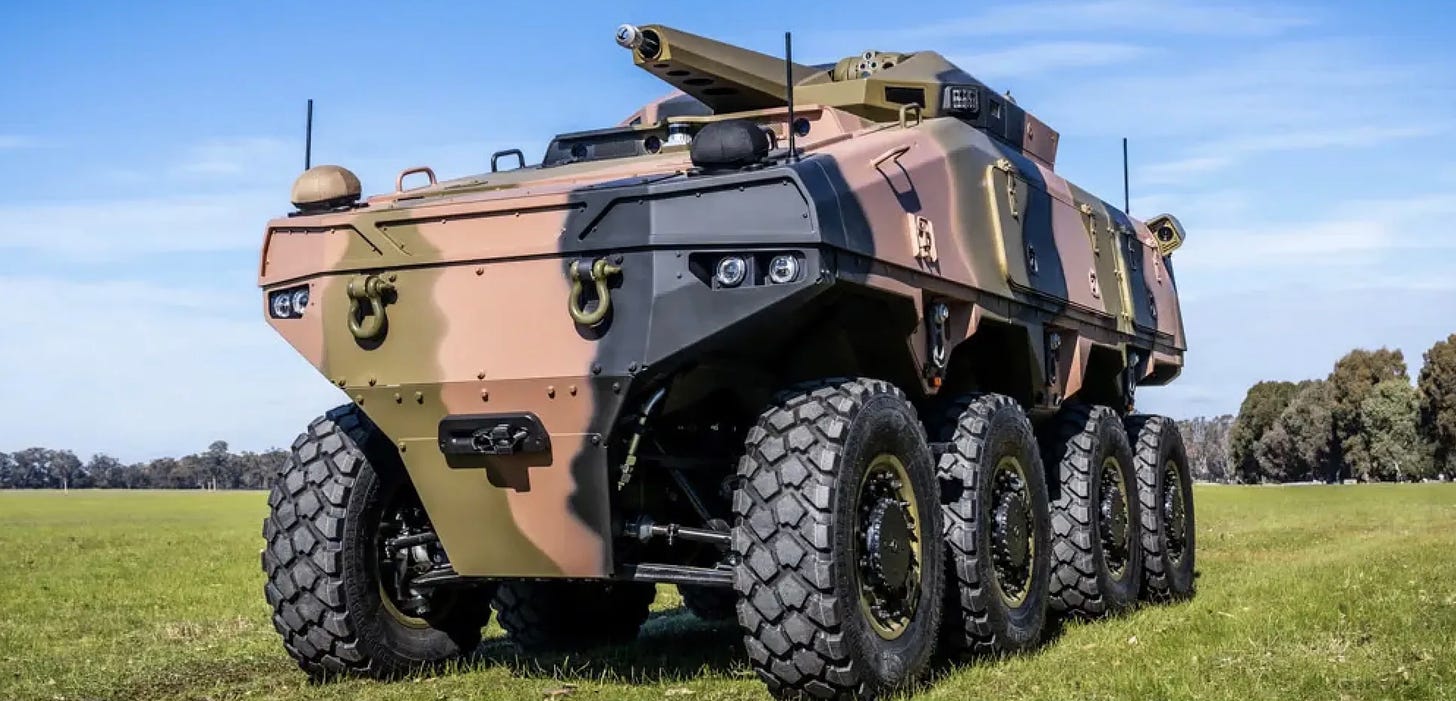The Big Five - 14 September edition
My regular update on conflict and confrontation in Ukraine, the Middle East and the Pacific, accompanied by recommended readings on the character of modern war and planning for future conflict.
Welcome to my weekly update.
The big issue in the Ukraine War this week has been the continued debate about the potential for the Ukrainians to use U.S. long range strike weapons - and other weapons with U.S. components - to strike targets deeper in Russia. The visit to Kyiv by the U.S. Secretary of State and UK Foreign Minister, as well as the visit to Washington DC by the new British PM both had this issue on their agendas.
Now, I appreciate that there are probably issues with this that aren’t in the public domain, and that certain U.S. and NATO capabilities might be needed to support the weapons. But, NATO and the U.S. have supported Ukraine from the beginning of the war, Russia has used very long range strike weapons against Ukraine since February 2022, and Putin has constantly talked up that he is already at war with NATO.
Can we please just make the inevitable decision to help Ukraine here, and not repeat the drawn out, timid decision-making process that accompanied decisions around HIMARS, self-propelled artillery, tanks, Patriot, and F16s? The current slow-rolling escalation terror demonstrated by the Biden administration is helping Russia and encouraging China. It goes without saying that we really shouldn’t be doing either.
In Kursk, Russia appears to have finally been able to shift from its more passive ‘contain the Ukrainian advance’ concept of the last few weeks to a more proactive stance of conducting mechanised counter attacks. It appears that Russia may have been able to retake some ground in the western parts of the Ukrainian salient inside Kursk, although this was partially reversed by subsequent Ukrainian counter attacks.
To the west of the current Ukrainian salient in Kursk, Ukrainian forces this week pushed over the border. The amount of progress made in this new axis of advance into Russia is uncertain. The purpose of this could be to relieve pressure on the western elements of the Ukrainian force in Kursk, or to capture/destroy Russian forces remaining south of the Seim River. We will know more in the coming days.
This is a rapidly changing situation in Kursk, and I am sure that within a few hours of publishing this, the situation will have changed again. Clearly, Ukraine intends to hold onto a significant portion of terrain inside Kursk and in doing so, continue to draw Russian forces into a fight there. While Russian forces are yet to be drawn from their main effort in the Donbas, Russian forces have been drawn from other parts of Ukraine which will provide other opportunities for the Ukrainians.
In the Donbas, Russian forces continued attacks along the Kupyansk-Svatove-Kreminna line without significant gains. Russian forces were able to advance north of Chasiv Yar on the west bank of the Siverskyi-Donets Donbas Canal.
Russia’s advance on Pokvosk has continued albeit at a much lower tempo. The Russians have advanced southeast of Pokrovsk and open source reporting has shown Russian forces operating in southern Ukrainsk, which is southeast of Pokrovsk. Russian forces have also advanced along the railway northeast of Novohrodivka, which is southeast of Pokrovsk.
On Friday, President Zelenskyy again talked up his Victory Plan. Speaking in Kyiv, the Ukrainian president noted that his plan would not end the war but “it would help.” He is due to travel to the U.S. for the United Nations General Assembly later in September, when he will probably meet and brief President Biden on the Victory Plan. Zelenskyy noted on Friday that “I can’t give 100 percent that it will stop Putin — no…But it will make Ukraine stronger. And I think push Putin to think about how to finish the war.”
Some other good updates on the war in Ukraine and Russia this week include:
This piece from Oliver Carroll in The Economist.
This update at MilitaryLand.
A Kursk update from The WarZone.
The daily updates from the Institute for the Study of War.
In the Middle East, this week the New York Times reported that Israel had conducted an airborne raid into Syria, near the Lebanese border. The raid was executed against an underground Hezbollah missile production facility. Apparently Israeli ground forces were able to destroy the facility but before doing so, secured crucial documents and other intelligence.
Interestingly, the New York Times article about this raid on the Syrian facility also included this piece of information: “On Sunday, General Kurilla visited the underground war room of the Israel Defense Forces’ Northern Command, where he was presented with the military’s operational plans for Lebanon, according to the Israel Defense Forces.”
And finally, in wrapping up this week’s events, to the Pacific.
It has been a busy week for naval exercises in the Pacific.
First, the Russians and Chinese kicked off their Ocean 2024 exercise. According to the Russians, the combined exercise with the Chinese will involve 400 warships, submarines and support vessels, over 120 naval aircraft and more than 90,000 personnel, operating not only in the Pacific but also in the Mediterranean and the Baltic. As a report from the US Naval Institute notes, “Ocean was the codename of the naval exercises conducted by the Soviet Navy in the 1970s and 1980s. These maneuvers were the Soviet Navy’s largest Cold War operational and combat training events.”
Also this week, the Chinese conducted large scale amphibious exercises. The 2-day activity, conducted in Dachang Bay in Fukian province, included a brigade-sized landing force. Also involved were PLA aircraft, warships, helicopters, drones, armored vehicles, importantly, civilian ferries that were loaded with ground forces. This last part is interesting, given that the use of civilian vessels is assumed to be a key part of the Chinese concept of operations for any military assault on Taiwan.
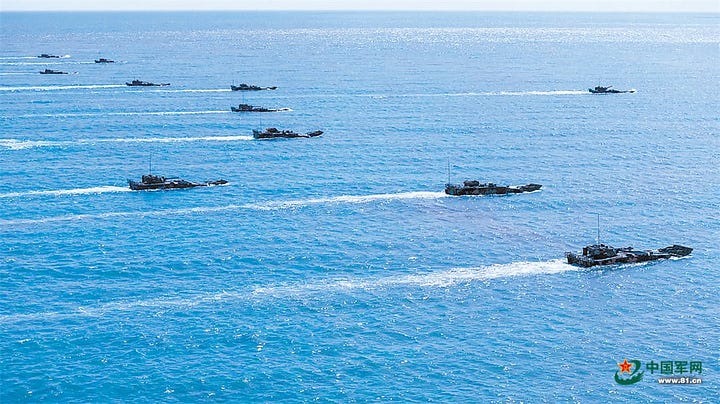

Speaking at a forum in China this week, a Chinese army Lieutenant General described China’s approach to getting on with its neighbours in the Western Pacific. In a show of what China really thinks about international relations, he stated that “we in the Chinese People’s Liberation Army will resolutely crush any foreign hostile encroachment on China’s territorial, sovereign and maritime rights and interests with firm determination, staunch will, strong capability and effective means.” This doesn’t really change anything in that part of the world. It has been obvious for years that China will use every form of coercion, bullying and thuggish behaviour to achieve its goals in the South China Sea.
Finally this week, North Korea released photos of a nuclear enrichment facility, while the North Korean dictator Kim Jong Un stated that his nation would “exponentially increase” its nuclear weapons. Edward Howell, a lecturer in International Relations at the University of Oxford noted that “Kim Jong Un’s visit to the uranium enrichment facility, two months prior to the election, suggests not only that Pyongyang’s indigenous ability to produce highly-enriched uranium is becoming increasingly advanced, but crucially, that North Korea has no intention to denuclearise, nor does it wish to offer any concessions on its nuclear and missile programmes in the future.”
This week, I concluded my Germany visit with a book event in Berlin, a strategic masterclass at the Zentrum Liberale Moderne (thank you Ben Tallis) and informal discussions with joint staff personnel at the German Ministry of Defence. Overall, it was a terrific visit.
I also published an article this week that explores what the classified U.S. strategy for Ukraine, recently sent to the U.S. congress might contain. You can read the article here. Latika Bourke and I published the latest episode of our podcast, available for paid subscribers, which you can listen to here. Finally, I also spoke to Times Radio about the latest events in Ukraine, and you can watch that interview here.
So, to this week’s recommended readings…
This week is a mix of China and Russia articles, as well as a couple of articles related to strategy, autonomous systems and combatting misinformation. As always, if you only have time to read a single article, the first one is my pick of the week.
Happy reading!
1. What is Strategic?
In this new piece at one of my favourite journals, Military Strategy Magazine, the authors examine the broadening use of the term ‘strategic’ and what this means for national security and military affairs. They argue that “defining the word “strategic” is a universal task that strategists must address when developing their approach to national security.” You can read the article here.
2. Russia Today: An Intelligence and Procurement Agency
This week, the U.S. accused Russia’s RT ‘news’ agency of running a much broader agenda than interfering with U.S. elections. This is apparently an agency with its finger in many different pies in multiple nations. It is apparently also involved in intelligence collection and the procurement of weapons for Russia. RT’s Editor in Chief Margarita Simonyan responded by saying, “We have done this, are doing this and will do this.” You can read the full article here, published at the Washington Post.
3. We Will Crush You: China
Speaking at a forum in China this week, Chinese army Lieutenant General He Lei described how “if the United States moves its pawns behind the scenes, if it pushes countries to the front line, or if the United States itself ends up on the front line, then we in the Chinese People’s Liberation Army… will never have any patience. We in the Chinese People’s Liberation Army will resolutely crush any foreign hostile encroachment on China’s territorial, sovereign and maritime rights and interests with firm determination, staunch will, strong capability and effective means.” Very unlikely he would have said this if it wasn’t already Chinese policy. You can read the story on this here.
4. Chatbots versus Misinformation
I would place this article in the “interesting but call me skeptical” basket. The author proposes using AI-generated chatbots to help in countering misinformation. But given the scale of the misinformation problem in democracries, it is worth a try. According to the authors, their research “upended…preconceived notions about how receptive people were to solid evidence debunking not only conspiracy theories, but also other beliefs that are not rooted in good-quality information.” You can read the full article here at the MIT Tech Review.
5. A Big, Exquisite Uncrewed Ground Combat Vehicle
This week at the Australian Land Forces 2024 expo in Melbourne, BAE Systems unveiled its new uncrewed ground vehicle. Called the Autonomous Tactical Light Armor System (or ATLAS for short) this 11-ton 8×8 vehicle, developed in Australia, is proposed as a “combat wingman”. Frankly, I am not really sure this is a viable battlefield system. It has a massive visual signature, making it as vulnerable as modern armoured vehicles. And, at this size and weight, it is sure to be expensive thus ensuring only small quantities are procured. The lessons of Ukraine in this regard indicate low signature, low cost and inexpensive systems are more likely to be effective in modern ground combat. That said, you can read about it here.




